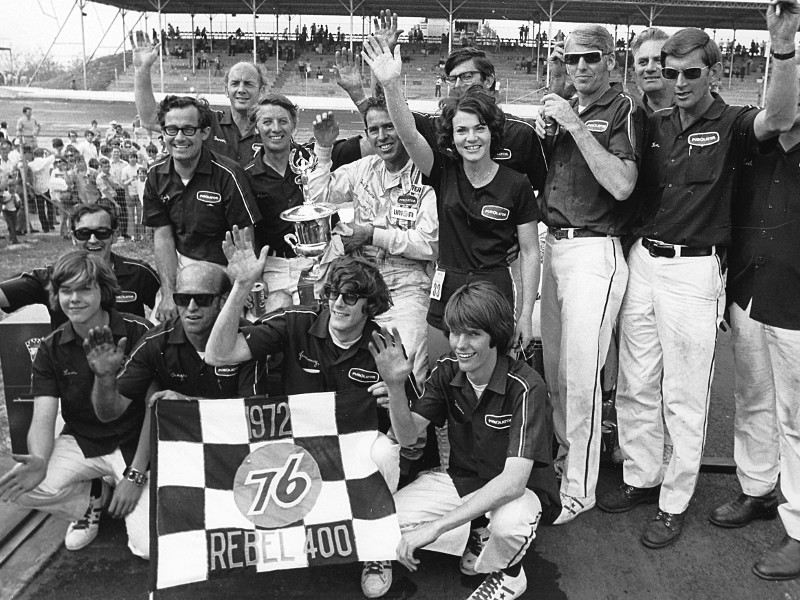David Pearson was the master of Darlington.
In 47 career starts there, the Silver Fox won 10 times and scored 12 poles. Pearson developed a formidable rhythm at the 1.366-mile track, varying his speed to catch and pass competitors at the optimum points on the track.
In his race car, Pearson was the epitome of calm and one of the foremost drivers in NASCAR history at saving his equipment for the end of a race.
Darlington always occupied a special significance for the NASCAR Hall of Famer from Spartanburg, South Carolina. Pearson may have been unflappable on the race track, but when his son Larry took the lead with 18 laps left in a 1995 NASCAR Xfinity Series race at Darlington, the Silver Fox was a nervous wreck.
Pearson was so agitated that he left the track and drove to a spot where he could park his car and listen to the finish on the radio. When Larry crossed the finish line to win the 147-lap event, Pearson sat in his car and wept.
As NASCAR celebrates its 75th anniversary, it’s important to remember that Darlington was the sport’s first “superspeedway,” before restrictor plates changed that distinction in the late 1980s.
Opened in 1950, egg-shaped Darlington featured a smaller, tighter turn at one end of the track to preserve a minnow pond that prevented the construction of symmetrical corners. That design choice has always been an essential aspect of the track’s character.
Darlington has proven itself worthy of not one, but two distinct nicknames. To those who raced there in the early days, it was the Lady in Black, a nod to the pitch-black asphalt covering corners barely wide enough to accommodate two cars with fresh tires.
As its notoriety grew, Darlington became The Track Too Tough to Tame, and even winning drivers rarely could leave a 500-mile race at the speedway without a “Darlington stripe” worn into the right sides of their cars.
“It’s a track where you really have to race the track as much as the competitors,” said NASCAR Hall of Famer Terry Labonte, whose two victories at Darlington came 23 years apart (1980 and 2003). “I’ve thought to myself before (that) it would be hard to go out there and run 500 miles by yourself and not hit the wall at least once or bounce off it or something.”
From its opening in 1950 Darlington Raceway has been host to the Southern 500, one of NASCAR’s Crown Jewel events. Johnny Mantz, from Long Beach, California, drove cross-country to compete for the colossal $10,000 first prize in the inaugural event and took the checkered flag more than nine laps ahead of runner-up Fireball Roberts.
In 1978, driving for Billy Hagan, Labonte made his NASCAR Cup Series debut in that event and immediately turned heads with a fourth-place finish.
Labonte’s Southern 500 win in 1980 was his first in the Cup Series. His Cup victory at Darlington in 2003 was his last.
“What a tough track,” Labonte said. “We always seemed to have a pretty good run on Labor Day weekend and had some good finishes… But if your car’s not right, you can get lapped pretty easily there.”
As a track, Darlington has embraced not only its own history but also that of NASCAR as a whole. Throwback weekend, where paint schemes on the cars pay homage to heroes of the past, is one of the most highly anticipated events on the NASCAR schedule.
The throwback paint schemes will be on display throughout the upcoming weekend, which will culminate in Sunday’s NASCAR Cup Series race.
WDUN will carry live MRN Radio coverage of the NASCAR Throwback Weekend from Darlington Raceway, beginning with Saturday's NASCAR Xfinity Series Shriners Children’s 200 at 1 pm on 102.9 FM and streaming live on AccessWDUN. Coverage continues on Sunday with the NASCAR Cup Series Goodyear 400 at 2 pm on 102.9 FM, AM 550 and streaming live on AccessWDUN.

http://accesswdun.com/article/2023/5/1182686/darlington-is-steeped-in-nascar-history-and-tradition
